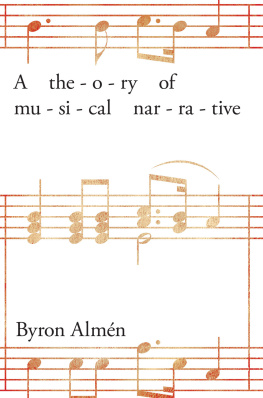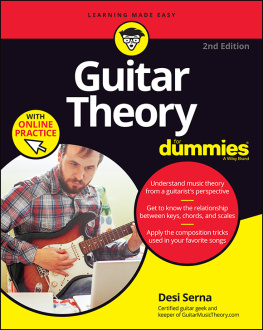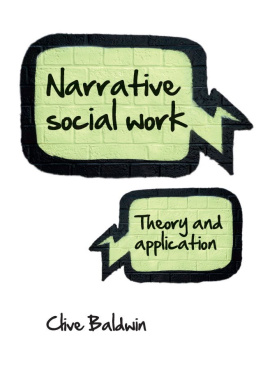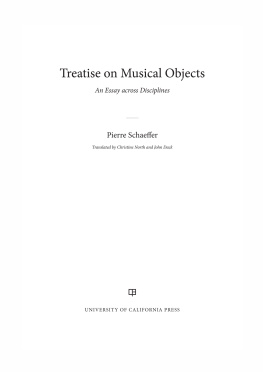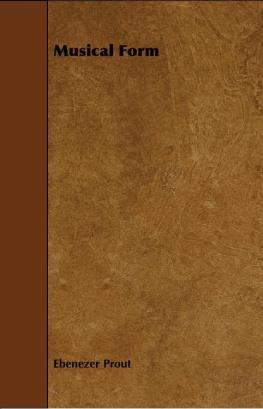Almén - A theory of musical narrative
Here you can read online Almén - A theory of musical narrative full text of the book (entire story) in english for free. Download pdf and epub, get meaning, cover and reviews about this ebook. year: 2017, publisher: Indiana University Press, genre: Art. Description of the work, (preface) as well as reviews are available. Best literature library LitArk.com created for fans of good reading and offers a wide selection of genres:
Romance novel
Science fiction
Adventure
Detective
Science
History
Home and family
Prose
Art
Politics
Computer
Non-fiction
Religion
Business
Children
Humor
Choose a favorite category and find really read worthwhile books. Enjoy immersion in the world of imagination, feel the emotions of the characters or learn something new for yourself, make an fascinating discovery.
A theory of musical narrative: summary, description and annotation
We offer to read an annotation, description, summary or preface (depends on what the author of the book "A theory of musical narrative" wrote himself). If you haven't found the necessary information about the book — write in the comments, we will try to find it.
Almén: author's other books
Who wrote A theory of musical narrative? Find out the surname, the name of the author of the book and a list of all author's works by series.
A theory of musical narrative — read online for free the complete book (whole text) full work
Below is the text of the book, divided by pages. System saving the place of the last page read, allows you to conveniently read the book "A theory of musical narrative" online for free, without having to search again every time where you left off. Put a bookmark, and you can go to the page where you finished reading at any time.
Font size:
Interval:
Bookmark:

A Theory of Musical Narrative
MUSICAL MEANING AND INTERPRETATION
Robert S. Hatten, editor
Approaches to Meaning in Music
Byron Almn and Edward Pearsall
Voicing Gender: Castrati, Travesti, and the Second Woman in Early Nineteenth-Century Italian Opera
Naomi Andr
Neil Young and the Poetics of Energy
William Echard
Interpreting Musical Gestures, Topics, and Tropes: Mozart, Beethoven, Schubert
Robert S. Hatten
Musical Meaning in Beethoven: Markedness, Correlation, and Interpretation
Robert S. Hatten
Intertextuality in Western Art Music
Michael L. Klein
Is Language a Music? Writings on Musical Form and Signification
David Lidov
Pleasure and Meaning in the Classical Symphony
Melanie Lowe
The Musical Topic: Hunt, Military and Pastoral
Raymond Monelle
Musical Representations, Subjects, and Objects: The Construction of Musical Thought in Zarlino, Descartes, Rameau, and Weber
Jairo Moreno
Deepening Musical Performance through Movement: The Theory and Practice of Embodied Interpretation
Alexandra Pierce
Expressive Forms in Brahmss Instrumental Music: Structure and Meaning in His Werther Quartet
Peter H. Smith
Music as Philosophy: Adorno and Beethovens Late Style
Michael Spitzer
Music and Wonder at the Medici Court: The 1589 Interludes for La pellegrina
Nina Treadwell
Debussys Late Style: The Compositions of the Great War
Marianne Wheeldon
BYRON ALMN
A Theory of Musical Narrative
INDIANA UNIVERSITY PRESS
Bloomington & Indianapolis
This book is a publication of
Indiana University Press
Office of Scholarly Publishing
Herman B Wells Library 350
1320 East 10th Street
Bloomington, Indiana 47405 USA
iupress.indiana.edu
First paperback edition 2017
2008 by Byron Almn
All rights reserved
No part of this book may be reproduced or utilized in any form or by any means, electronic or mechanical, including photocopying and recording, or by any information storage and retrieval system, without permission in writing from the publisher.
The paper used in this publication meets the minimum requirements of the American National Standard for Information SciencesPermanence of Paper for Printed Library Materials, ANSI Z39.48-1992.
Manufactured in the United States of America
The Library of Congress has cataloged the original edition as follows:
Almn, Byron, [date].
A theory of musical narrative / Byron Almn.
p. cm. (Musical meaning and interpretation)
Includes bibliographical references and index.
ISBN 978-0-253-35238-5 (cloth : alk. paper) 1. MusicPhilosophy and aesthetics. 2. Musical analysis 3. MusicSemiotics. 4. Music and literature. 5. Music theory. I. Title.
ML3800.A46 2008
581dc22
ISBN 978-0-253-03009-2 (pbk.)
ISBN 978-0-253-03028-3 (eb)
1 2 3 4 522 21 20 19 18 17
For
Phil Abalan
A. DeWayne Wee
J. Peter Burkholder
Robert S. Hatten
and, as always,
For Sarah
Contents
Preface
The inspiration for this project dates back to 1992, to the preliminary research period of my dissertation Narrative Archetypes in Music: A Semiotic Approach (1996), and to my near-simultaneous discovery of three books from disparate fields: Northrop Fryes Anatomy of Criticism (1957), Eero Tarastis A Theory of Musical Semiotics (1994), and James Jakb Liszkas The Semiotic of Myth (1989).
Fryes book, an acknowledged masterpiece, is a remarkable taxonomic rewriting of the principles of literary criticism; its most influential constituent essay, Archetypal Criticism, introduces his four mythoiromance, tragedy, irony, and comedythat represent fundamental, pregeneric patterns of narrative motion. This formulation has influenced countless scholars in many fields, most notably Hayden White, who has observed (1973) the tendency of historians to consciously and unconsciously emplot historical events according to temporal narrative schema. I had been acquainted with these mythoi since high school, but my first reading of the essay in 1992 convinced me that they are eminently applicable to music.
Tarastis book was very nearly my first introduction to the semiotic discipline. Although I was not then familiar with Charles S. Peirce, Ferdinand de Saussure, or Algirdas Julien Greimas, several aspects of Tarastis writing immediately appealed to me. First, it is systematic and thorough (although his writing style is quite expansive), but these qualities never unseat his sensitive musical insight. Second, his application of the notion of modality to music to account for the encoding of human values into musical discourse seemed to offer a way out of the arbitrary assignment of expressive characteristics to music. Third, his willingness to tackle a large conceptual terrain and a broad representation of musical literature was refreshingly ambitious and welcome. With respect to my own development, Tarasti was an important model for bringing together methodological rigor, solid musical intuition, and an eclectic breadth of interests. My choice of title for this book thus represents an acknowledgment of the debt I owe to his example.
Fryes deductive taxonomic system and Tarastis inductive analytical methodology embody balancing impulses that might work effectively together. The means to achieve this balance in the current volume is accomplished by The Semiotic of Myth. It does for the field of mythology what I am attempting to do for music: locate an analytically rigorous approach to narrative within a socially and psychologically methodological frameand it specifically invokes Fryes mythoi as its upper-level taxonomic principle.
Music, like mythology, is a temporal phenomenon, and both are amenable to narrative organization. Liszkas concept of narrative as transvaluationthe change in markedness and rank within a cultural hierarchy over timeis crucial for the understanding of musical narrative, not only because it sidesteps lengthy detours into literary narrative theory, but because it accounts for the social and psychological function of narrative: revealing the implication of the necessary conflict between the violence imposed by hierarchy and the violence required to counter it (Liszka 1989: 133). This factor informs critiques of musical discourse that reinforce the status quo (Adorno, McClary) and transformative approaches that implicate music as a vehicle of change and challenge (Schoenberg). It also allows the analyst to see music as a mirror of psychic processes of development and integration.
Understanding narrative as transvaluation also bridges the rhetorical gap between context-centered and structure-centered approaches to music. I suggest in this volume that it is both possible and desirable to balance careful attention to musical details with an attunement to musics location within a social and significatory network. Further, the recognitionfrom Fryethat there are multiple and functionally equivalent realizations of narrative conflict prevents narrative analysis from becoming a force either for reactionary repression or for the relativistic erosion of all stable value systems.
In the years since I encountered these works and began developing my approach, I have encountered other studies that have effectively investigated issues of expression in combination with analytical rigor and cultural insight. In particular, the research undertaken by Robert S. Hatten and Vera Micznik has proved very influential to me. To Hattens work I owe my integration of topic into the multi-leveled signifying network of musical narrative. In Miczniks narrative writings I found an effective methodology, entirely different in flavor from that of Tarasti, that supported the analytical eclecticism of this volume.
Next pageFont size:
Interval:
Bookmark:
Similar books «A theory of musical narrative»
Look at similar books to A theory of musical narrative. We have selected literature similar in name and meaning in the hope of providing readers with more options to find new, interesting, not yet read works.
Discussion, reviews of the book A theory of musical narrative and just readers' own opinions. Leave your comments, write what you think about the work, its meaning or the main characters. Specify what exactly you liked and what you didn't like, and why you think so.

